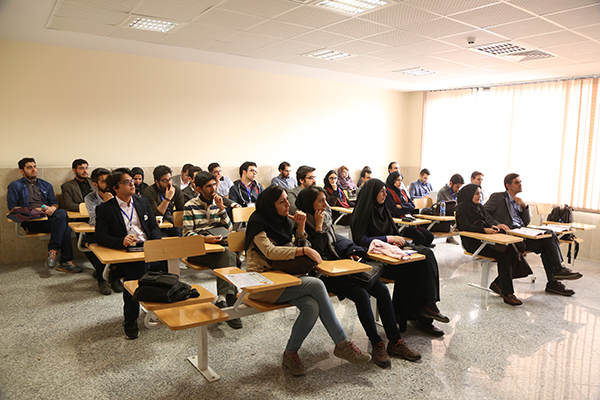In this half-day workshop, we would like to provide young researchers with an introduction to the state-of-the-art open-source software and hardware available for robotics research, with a special emphasis on locomotion and manipulation problems.
Organizers: Majid Khadiv (Max Planck Institute, Germany), Farbod Farshidian (ETH, Zurich)
Each slot will be 45 min, with 30-40 minutes dedicated to the speaker's presentation and the rest is Q&A.

Dr. Justin Carpentier, INRIA, France
In this talk, I will introduce Pinocchio, an open source and generic purposed library to efficiently compute the dynamics and related quantities to control robots. While many alternative solutions have been developed in the past decade within the robotics community, Pinocchio presents unique features essential for motion planning, optimal control and reinforcement learning in Robotics. Pinocchio is nowadays word-widely used in both industry and academia. During this talk, I will notably expose some new recent features of Pinocchio, namely the efficient and robust resolution of constrained dynamic equations and the analytical derivatives of Rigid Body Dynamics algorithms. I will also depict the future roadmap of the project and related software.

Dr. Andrea Del Prete, University of Trento, Italy
In the last decade Task-Space Inverse Dynamics (TSID) has become a standard method for the control of complex robots, especially quadrupeds and bipeds. However, while the theoretical aspects of this control framework have reached maturity and a large consensus in the robotics community, a shared implementation was missing. The TSID library was created in 2017 with the goal of overcoming this limitation. TSID is an efficient, generic and open-source C++ library based on Eigen (for linear algebra), Pinocchio (for multi-body dynamics) and Eiquadprog (for solving quadratic programs). It comes with Python bindings to ease prototyping and Debian packages to ease the installation process. TSID is the result of a collaborative effort by several researchers and engineers from different institutions and universities around the world, and it is currently supported by this active community.

Dr. Majid Khadiv, Max Planck Institute for Intelligent Systems, Germany
Legged robots (especially humanoids) are the most suitable robot platform that could be deployed in our daily lives in the future. However, the complexity in the mechanical structure of these robots as well as the need for advanced control software hindered progress in this field. On the hardware side, there is no standard hardware such that researchers can use to benchmark and compare their algorithms. Furthermore, legged robots are expensive and not every lab can afford to buy them for research. On the control side, the dynamics of these robots are highly complex which makes their control extremely challenging. This complexity has several aspects: 1) These robots are under-actuated and could easily fall down if not controlled properly, 2) locomotion can only be realized through establishing and breaking contact which enforces a hybrid dynamics, 3) The system is very high dimensional (up to 100 states and 50 control inputs) and the dynamic model is highly nonlinear, 4) the system is extremely constrained due to the limited amount of contact forces between the robot and the environment, etc. In this talk, I will first briefly present our recent efforts in the Open Dynamic Robot Initiative (ODRI) to provide the community with low-cost, but high-performance legged platforms that are fully open-source and can be replicated quickly using 3D-printing technology. I will also extensively talk about my recent efforts to find tractable ways on the use of optimal control to safely control legged robots and the corresponding open-source software we developed as a result of this effort.

Dr. Thomas Flayols, LAAS-CNRS, Toulous, France
In this presentation, I will discuss the electronic structure of ODRI robots. Based on custom developed solutions, an open hardware design allows us to intervene at all levels and make our platforms evolve. Modular electronics enable us to build different legged robots thanks to miniaturized permanent magnet synchronous motor controllers and centralization electronics that allows us to close the control loop with a powerful remote computer via a 1kHz wired or wireless link, while keeping the weight of the robots in motion as light as possible.

Dr. Steve Tonneau, University of Edinburgh, UK
[1] SL1M
[2] NDcurves
[3] Memmo project
[4] Nimble One
Making a legged robot walk requires a variety of skills, involving among other things advanced numerical mathematics, software engineering and mechanics. Several recent contributions have attempted provided the community with essential software bricks that are generic enough to be deployed with arbitrary robots. The pinocchio library is a successful example of such contribution for computing the inverse dynamics of the robot. Although generic motion planning frameworks exist, few open source contributions propose to automatically compute the footsteps plans that describe the contacts a robot must create with the environment to move. As a result the contact plans are often manually provided when conducting experiments. In this talk I will introduce SL1M, a python-interfaced combinatorial planner for computing footsteps for legged robots with any number of legs. The library is successfully used by academicians from the Memmo European project[3], but also by SMEs such as the Toulouse-based startup Nimble One[4]. In the second part of the presentation, I will introduce NDcurves[2], a template-based Library for creating curves of arbitrary order and dimension, eventually subject to derivative constraints. I will demonstrate how it can efficiently be used to solve numerical optimisation problems thanks to its automatic differentiation features. Both libraries are available as binaries for Ubuntu.

Dr. Farbod Farshidian, Robotic System Lab, ETH Zurich.
Abstract...

Dr. Carlos Mastalli, University of Edinburgh and Alan Turing Institute, UK
The Crocoddyl project aims to make advances in optimal control that potentially enable various applications such as predictive control and codesign in robotics. In this talk, I will give an overview of the salient aspects of Crocoddyl, share recent progress on numerical optimal control, and report recent examples on predictive control and codesign for agile manoeuvres in legged robotics.

Dr. Stefan Bauer, KTH, Sweden
Many questions in everyday life as well as in research are causal in nature: How would the climate have changed had we reduced our carbon emissions in the 80s? Will my headache go away if I take an aspirin? Inherently, such questions need to specify the causal variables relevant to the question. A central problem for AI and key application areas like health care or robotics is thus the discovery of high-level causal variables from low-level observations like pixel values. While deep neural networks have achieved outstanding success in learning powerful representations for prediction, they fail to explain the effect of interventions. This is reflected in a limited ability to transfer and generalize even between related tasks. As a way forward to learn causal representations from data, this talk will describe our recent advances of combining interventions and causal structure with deep learning based approaches, as well as our efforts to create real-world benchmarks for the interactive learning paradigm. Using the developed open-source benchmarks we organized a robotics challenge in the cloud for dexterous manipulation in 2020 and 2021 and will discuss insights and results from the competition.



